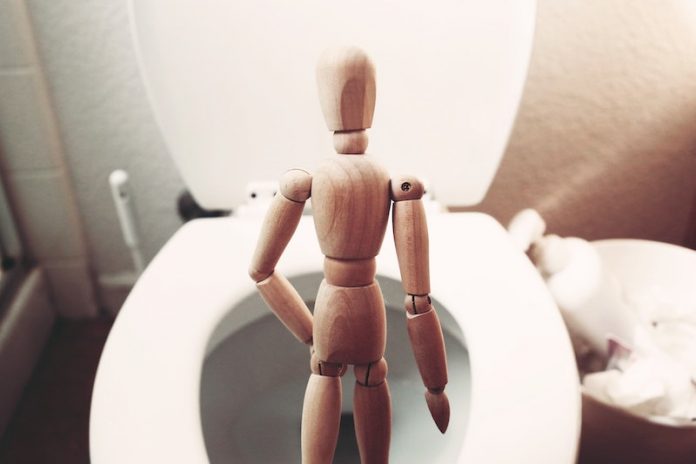
Some people are better protected than others against urinary tract infections.
This may be because their bodies produce more of a protein called uromodulin.
In a new study, researchers have found out exactly how this helper protein brings relief when nature calls and how this knowledge might benefit the treatment and prevention of these painful inflammations.
Their findings could help to develop new strategies for the treatment of urinary tract infections in the future.
The research was conducted by a team at ETH Zurich and elsewhere.
Anyone who has ever had cystitis knows that urinary tract infections of this kind are annoying and painful. They can be well treated by antibiotics but may be fatal if left untreated.
These infections are usually caused by what is known as uropathogenic E. coli bacteria when they bind to the cells of the bladder, ureter, or urethra with their pili, the thread-like appendages that grow out of them like hairs.
But protection is at hand in the form of a certain protein, produced naturally in the body, called uromodulin.
Around 70% of all people carry a uromodulin gene variant in their genome, which means that they produce this protective protein in, particularly large quantities.
Accordingly, they have a smaller risk of contracting urinary tract infections.
But the exact process by which uromodulin prevents inflammation had never been understood.
In the study, the team has filled this knowledge gap by investigating uromodulin’s appearance and how the protein goes about neutralizing uropathogenic E. coli.
First, they analyzed how the protein binds to the bacterial pili at the molecular level.
Next, the team examined uromodulin using an imaging technique that produces three-dimensional views of the structure of proteins and cells with no need for chemical modification or dehydration.
This showed them that uromodulin forms long filaments consisting on an average of around 400 individual protein molecules strung together.
And that each link of this protein chain contains the characteristic pattern of sugar chains to which bacterial pili like to bind.
Finally, the researchers checked to see whether all these processes they had observed in the laboratory also occur in patients.
They analyzed urine samples from infected patients provided by the Children’s Hospital in Zurich and found exactly the same interactions between uromodulin and the pathogens.
The research team’s work offers pointers on how to treat and prevent urinary tract infections without using antibiotics.
Until now, patients have often been given preparations that contain the sugar mannose. To a certain extent, these prevent the E. coli bacteria from attaching themselves to the cells of the urinary tract.
The new findings that the bacterial pili recognize not only mannose but also other sugars present on uromodulin. This might indicate that treatment with combined sugar supplements would be more effective.
The new findings also help in the development of new active substances. Pharmaceutical companies are looking to identify new active substances that will prevent precisely these interactions—but these risks also disrupting the protective binding of uromodulin to the bacteria.
One author of the study is Gregor Weiss, a doctoral student in molecular biology at ETH.
The study is published in Science.
Copyright © 2020 Knowridge Science Report. All rights reserved.



